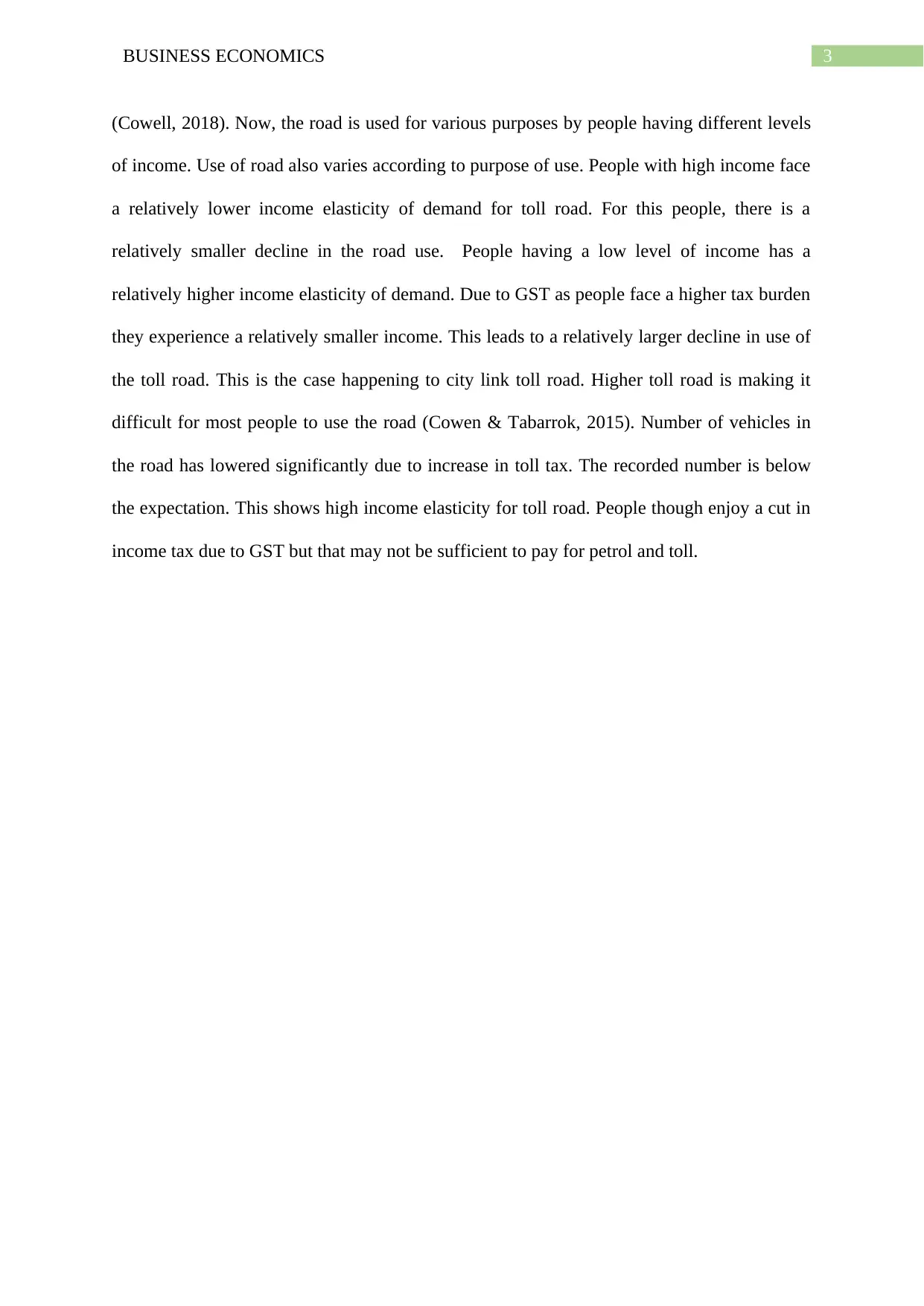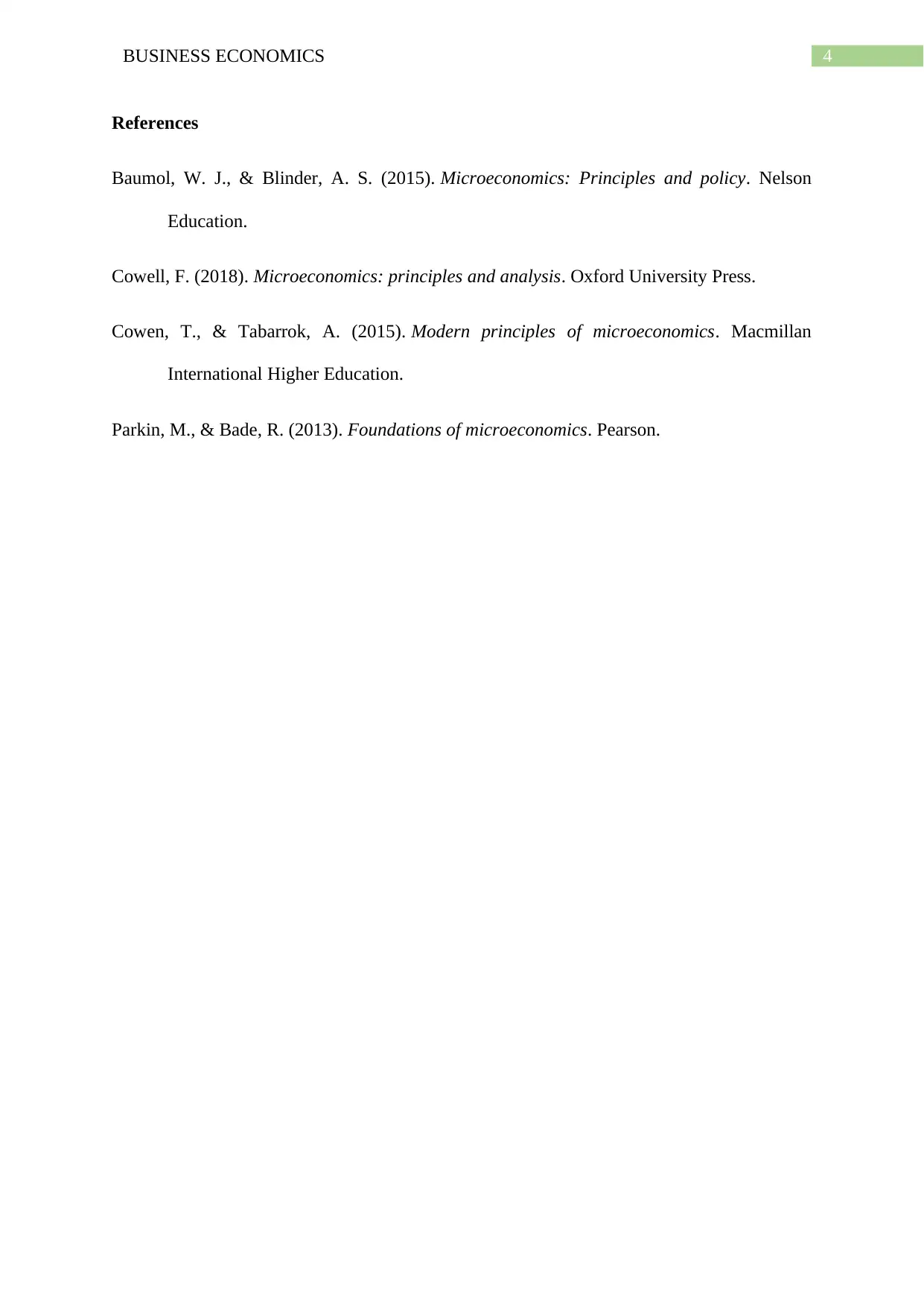ECO100: Business Economics Report on Income Elasticity
VerifiedAdded on 2022/10/12
|5
|667
|209
Report
AI Summary
This report examines the impact of toll charges on the income elasticity of demand, using the City Link toll increase as a case study. It begins by defining income elasticity and its different types, including normal and inferior goods, and income elastic versus inelastic demand. The report then analyzes the effects of the 11% toll increase, considering the impact of GST. It explains how different income levels influence road usage, with lower-income individuals showing higher elasticity. The analysis highlights a significant decrease in road usage due to the higher toll, indicating high income elasticity for the toll road. The report references relevant economic theories and provides a conclusion based on the observed data, supported by academic references.
1 out of 5











![[object Object]](/_next/static/media/star-bottom.7253800d.svg)